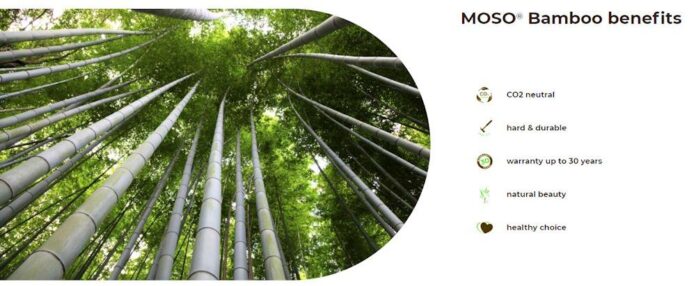[ad_1]
Bamboo is one of the most hyped eco-friendly materials on the block — you’ll find it in everything from toothbrushes to tableware, and it has made a name for itself as a sustainable swap for interior design, too.
But what does ‘sustainable’ really mean when it comes to lighting? Does bamboo live up to its environmentally-friendly credentials, or is it just a greenwashing buzzword? We’ve done a deep dive to help you make the best sustainable design choices for your home.
Bamboo: the sustainable credentials

It’s renewable.
Bamboo is a fast growing, tree-like grass. The plant is naturally regenerative, so a bamboo crop will continue to produce for years without replanting. It is also renewable thanks to the speed at which it grows: the plant reaches maturity within 1 to 5 years, compared to a wood like pine, which takes 25 to 30 years.
It’s low impact.
As well as growing quickly, bamboo requires very little environmentally-damaging pesticides or fertilisers to grow, and needs very little water. This means less degradation of the growing environment. Bamboo is also naturally biodegradable — many bamboo products can be fully decomposed within a few years.
It’s durable.

The most sustainable picks for your home are the ones you’ll love for years to come. Bamboo is lightweight and incredibly strong, making it a long-lasting and adaptable material for lighting solutions. From pared-back Scandi styles to looser, hand-crafted looks, the possibilities with bamboo are endless — making it a great pick for eco-conscious customers, whatever their style.
So, what’s the catch?
Bamboo is a high achiever across all eco-friendly fronts, but there are other factors to take into account when looking at sustainability. Where is the bamboo coming from, and how is it getting to its end location?
Although Bamboo can be grown all around the world, most of its commercial-scale production comes from Southeast Asia. Transport from the country of origin will factor in the ‘embedded’ carbon footprint, so it’s important to take this into consideration.

Also, not all bamboo is harvested and produced equally. Some bamboo producers may harvest the bamboo too early or too late, damaging the mother plant. Some producers may also use large quantities of harmful chemicals and glues as a by-product of production, thus it’s crucial that lighting manufacturers perform their due diligence and ask their suppliers to provide detailed information and/or third-party verification, so that all “green” claims can be backed up.
Bamboo & sustainability: our verdict
Is bamboo really the sustainable superhero for lighting? Well, it depends. Naturally renewable, long-lasting materials can be a great fit, whether they are being incorporated into an exterior bollard light or a statement interior piece. Bamboo walks the line between on-trend and timeless, so it’s likely a bamboo piece will suit your home’s aesthetic for years to come.
The same handcrafted approach can also be achieved through other materials, like glass or porcelain, which may be available locally. Our takeaway: think about both where the material is coming from and how the piece is made, as well as the merits of the material itself. Buying local, handcrafted pieces is always a sustainable choice.
Whatever material you opt for, eco-friendly LED lightbulbs can also help boost the sustainability of your lighting setup. LED bulbs will save you between 75% to 80% of a traditional bulb’s energy usage — plus, it’ll last about twice as long.

Here at Gwyn Carless at The Light Yard, we focus on using both eco-friendly materials and traditional, low-impact crafting methods to create our collections. We use durable MOSO Bamboo, which using circular economy principles and responsible harvesting practices ranks it among the most environmentally positive choices available in the global market.
For more information on how we use bamboo to create striking and environmentally responsible lighting such as our new ECO Prestige exterior bollard, email us on [email protected], or call + 44 (0)330 223 3940.
And for more lighting commentary, design news and advice, follow Gwyn Carless At The Light Yard on Facebook, Twitter, Instagram and/or LinkedIn.
[ad_2]
www.thelightyard.co.uk










